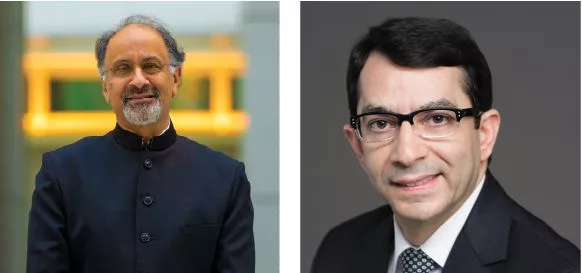World Bank: How to Accelerate Growth and Progress in Developing Economies
Amid a barrage of shocks during the past four years, the global economy has proved to be surprisingly resilient. Major economies are emerging mostly unscathed after the fastest rise in interest rates in 40 years—without the usual scars of steep unemployment rates or financial crashes. Global inflation is being tamed without tipping the world into a recession. It is rare for countries to bring inflation rates down without triggering a downturn. But this time a “soft landing” seems increasingly possible.
Yet beyond the next two years, the outlook is dark. The end of 2024 will mark the halfway point of what was expected to be a transformative decade for development—when extreme poverty was to be extinguished, when major communicable diseases were to be eradicated, and when greenhouse-gas emissions were to be cut nearly in half. What looms instead is a wretched milestone: the weakest global growth performance of any half-decade since 1990 with people in one out of every four developing economies poorer than they were before the pandemic.

Authors: Indermit Gill Chief Economist and Senior Vice President for Development Economics at the World Bank & M Ayhan Kose Deputy Chief Economist and Director of the Prospects Group at the World Bank
The World Bank’s latest Global Economic Prospects forecasts imply that most economies—advanced as well as developing—are set to grow more slowly in 2024 and 2025 than they did in the decade before COVID-19. Global growth is expected to slow for a third year in a row—to 2.4 percent—before ticking up to 2.7 percent in 2025. Those rates, however, would still be far below the 3.1 percent average of the 2010s. Per-capita investment growth in 2023 and 2024 is expected to average just 3.7 percent—barely half the average of the previous two decades. Without corrective action, global growth will remain well below potential for the remainder of the 2020s.
“If each developing economy that engineered such an investment boom in the 2000s and 2010s were to repeat the feat in the 2020s, prospects for developing economies would move a third of the way closer to their full economic potential.”
Our forecasts may seem dismal. Yet the policy analysis provides hope.
Global Economic Prospects includes the first systematic assessment of what it takes to generate the most desirable kind of investment boom—one that comes with an increase in per-capita income growth, a step-up in productivity, and a reduction in poverty. Since the 1950s, countries across the world have managed to generate nearly 200 windfall-producing investment booms—episodes in which per-capita investment growth accelerated to 4 percent or more and stayed there for more than six years. The secret sauce for sparking such episodes was a comprehensive policy package: consolidation of government finances, expansion of trade and financial flows, stronger fiscal and financial institutions, and a better investment climate for private enterprise.
If each developing economy that engineered such an investment boom in the 2000s and 2010s were to repeat the feat in the 2020s, prospects for developing economies would move a third of the way closer to their full economic potential. If all developing economies also repeated their best 10-year performance to improve health, education, and labor force participation, they would close most of the remaining gap. In other words, the potential growth in developing economies in the 2020s would be similar to what it was during the 2010s.
For the two-thirds of developing economies that rely on commodity exports, an additional avenue is open. They can do better simply by applying the Hippocratic principle to fiscal policy: first, do no harm. These economies are prone to debilitating boom-and-bust cycles because commodity prices can rise or fall suddenly, and their fiscal policies tend to make matters worse. Fiscal procyclicality is 30 percent stronger in commodity-exporting developing economies than it is in other developing economies. Fiscal spending among commodity exporters also tends to be 40 percent more volatile than in other developing economies.
The result is a chronic drag on their growth prospects. The drag can be reduced by—among other things—putting in place a fiscal framework to discipline government spending, adopting flexible exchange-rate systems, and avoiding restrictions on international movements of capital. If instituted as a package, these policy measures could help commodity exporters in developing economies increase per capita GDP growth by 1 percentage point every four or five years.
The 2020s have so far been a period of broken promises. Governments across the world have fallen short of the “unprecedented” goals they promised to meet by 2030: “to end poverty and hunger everywhere; to combat inequalities within and among countries;…and to ensure the lasting protection of the planet and its natural resources.” But 2030 is still more than a half-decade away. That is long enough for emerging markets and developing economies to regain some of the lost ground—if their governments act now.
You may have an interest in also reading…
World Bank Report: Digital Payments Vital To Economic Growth
Gates Foundation and Better Than Cash Alliance urge governments to embrace digital financial services, offers concrete action steps. Integrating digital
Do Not Over-Heat
The IMF reports that powered by a resurgence in Asia, emerging markets, especially those of China and India are leading
Johan Thijs: Steering KBC to Continued Success
Johan Thijs, CEO of KBC Group, is one of Europe’s most successful corporate leaders. Under his guidance, the group has



















































































